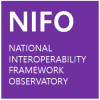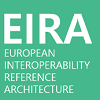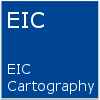
Covered by:
| Recommendation 1 | Ensure that national interoperability frameworks and interoperability strategies are aligned with the EIF and, if needed, tailor and extend them to address the national context and needs. Supporting Solutions |
| Legal initiative | Description | Recommendation |
|
Status: In force |
The General Data Protection Regulation (GDPR) allows European Union (EU) citizens to better control their personal data. It also modernises and unifies rules allowing businesses to reduce red tape and to benefit from greater consumer trust. The GDPR is part of the EU data protection reform package, along with the data protection directive for police and criminal justice authorities. |
Recommendation 1 |
|
Status: In force and transposed |
This Directve aims to make public sector websites and mobile applications more accessible, and to harmonise varying standards within the EU, reducing barriers for developers of accessibility-related products and services. This will allow EU citizens, particularly those with a disability, to gain better access to public services, an underlying principle of the EU’s Digital Agenda for Europe and eGovernment Action Plan 2016-2020. |
Recommendation 1 |
|
Status: In force and transposed |
This Directive proposes a wide-ranging set of measures to boost the level of security of network and information systems (cybersecurity) to secure services vital to the EU economy and society. It aims to ensure that EU countries are well-prepared and are ready to handle and respond to cyberattacks through: - the designation of competent authorities, - the set-up of computer-security incident response teams (CSIRTs), and - the adoption of national cybersecurity strategies. - It also establishes EU-level cooperation both at strategic and technical level. Lastly, it introduces the obligation on essential-services providers and digital service providers to take the appropriate security measures and to notify the relevant national authorities about serious incidents. |
Recommendation 1 |
|
Status: In force and transposed |
The Directive: - establishes a set of updated rules to regulate electronic communications (telecoms) networks, telecoms services, and associated facilities and services; - sets out tasks for national regulatory authorities and other competent authorities, and establishes a set of procedures to ensure that the regulatory framework is harmonised throughout the EU; - aims to stimulate competition and increased investment in 5G and very high capacity networks, so that every citizen and business in the EU can enjoy high quality connectivity, a high level of consumer protection and an increased choice of innovative digital services. |
Recommendation 1 |
|
Status: In force and transposed |
This Directive aims to remove barriers to trade in services in the EU, by: - simplifying administrative procedures for service providers; - enhancing the rights of consumers and businesses receiving services; and - fostering cooperation among EU countries. |
Recommendation 1 |
|
Status: In force and transposed |
This Directive aims to better protect individuals’ personal data when their data is being processed by police and criminal justice authorities. It also aims to improve cooperation in the fight against terrorism and cross-border crime in the EU by enabling police and criminal justice authorities in EU countries to exchange information necessary for investigations more efficiently and effectively. The Data Protection Directive for Police and Criminal Justice Authorities is part of the EU data protection reform package along with the General Data Protection Regulation (Regulation (EU) 2016/679). | Recommendation 1 |
|
Concrete example/good practice |
Summary |
| The implementation of the Czech central interoperability governance mechanism | This good practice illustrates the implementation by the Czech Republic of the EIF underlying Principle 1 on subsidiarity and proportionality at the national level. The good practice includes the implementation of a legislative framework in areas of public ICT systems and services where interoperability is a must. Also, the government implemented a central governance body with a legally supported mandate, the Chief architect of eGovernment office, that ensures interoperability by focusing on the use of shared government ICT services, reuse of solutions, as well as compliance with the national architecture plan, eGovernment principles and public services ICT strategy. |
| The National Interoperability Framework of Spain (ENI) |
In Spain, cooperation among public administrations, citizens and businesses is considered as a key pre-requisite for interoperability. In the country, interoperability is implemented through the National Interoperability Framework of Spain (ENI), which has been developed in line with the EIF. The compliance of the ENI with the EIF is ensured by the implementation of a gap analysis based on a traffic light system. The system shows the principles and recommendations that are aligned between the two frameworks in green, and the missing aspects, such as actions to be implemented and/or topics that deserve special attention in yellow or red. It thus helps to define the overall state-of play of the country and provides policy makers with detailed information when defining the way forward for the country. |
| The Norwegian Interoperability Framework (NIF) |
Two main initiatives characterize Norway’s efforts to foster cooperation and coordination among public administrations. The first one is the revision (in 2019 and 2020) of the architecture principles for public sector digitalization which goal is to foster the public sector’s interoperability and interactions with businesses. The implementation of the architecture principles is mandatory for public administrations at the national level and recommended for those at the sub-national level (e.g. municipalities). The second initiative is the publication of the Norwegian Interoperability Framework (NIF) in 2018. It is a national transposition of the European Interoperability Framework (EIF) that aims to help public administrations in defining, developing and managing digital public services, including cross-sectorial ones. Norway’s experience highlighted the importance of stakeholder involvement and participation, and thus of collaboration, to improve interoperability. |
|
One of the key initiatives taken by the combined governmental organizations in the Netherlands was the development of the Dutch Governmental Reference Architecture (NORA) to support the (re)design of governmental services, including European cross-border services. According to the cabinet’s decision in 2008, NORA is designated to ensure the deployment of the EIF in the Dutch government. The NORA is published on the internet and is available here: www.NORAonline.nl Since its launch in 2005, NORA is considered the de facto Dutch NIF and plays an important role as a knowledge platform. NORA is a platform that gathers knowledge from several experts in the design of (digital) services. Therefore, it supports the creation of domain-specific architectures such as healthcare, education, social security, and finance, and covers areas such as architecture principles, themes for new developments, standards, specifications, and architecture building blocks. The Netherlands’ success factors in fostering interoperability are community management and the sharing of knowledge and information through the NORA platform. This ensures effective cooperation between government service providers and optimal reuse of existing solutions. The Netherlands recommends that EU programs for cross-border services reuse the architectural solutions provided by the ISA² programme of the European Commission. |
| Solution | Description | Associated Recommendations |
|
CAMSS-as-a-Service |
CAMSS-as-a-Service, provides a service which aim is the assessment of standards and specifications on demand through the use of CAMSS Tools. The author of the assessments is the CAMSS Team. | Recommendation 1 |

Digital Public Administrations factsheets |
The goal of these factsheets is to become a prime source of country intelligence on all digital public administration-related matters in Europe, while capturing useful information on the main trends and developments in this field. At the same time, the factsheets provide information on European countries’ main actors and institutions responsible for the maintenance and delivery of Digital Public Administration services. | Recommendation 1 |

|
The European Interoperability Reference Architecture (EIRA©) is an architecture content metamodel defining the most salient architectural building blocks (ABBs) needed to build interoperable e-Government systems. The EIRA© provides a common terminology that can be used by people working for public administrations in various architecture and system development tasks. The EIRA© was created and is being maintained in the context of Action 2016.32 of the ISA² Programme. The EIRA uses (and extends) the ArchiMate language as a modelling notation and uses service orientation as an architectural style. | Recommendation 1 |

EIRA Library of Interoperability Specifications |
The EIRA Library of Interoperability Specifications is a library containing the standards and specifications defining the interoperability requirements of the architectural building blocks (ABBs) contained in the European Interoperability Reference Architecture (EIRA). The aim of this library is supporting solutions architects when modelling using EIRA. | Recommendation 1 |

|
The European Interoperability Cartography (EIC), as defined by the Decision (EU) 2015/2240 is a “repository of interoperability solutions for European public administrations provided by Union institutions and Member States, presented in a common format and complying with specific re-usability and interoperability criteria that can be represented on the EIRA”. The Decision (EU) 2015/2240 further states that “interoperability solutions and updates shall, where appropriate, be included in the EIC and be made available for re-use by European public administrations”. | Recommendation 1 |

IMAPS solution v1.2 |
IMAPS is a user-friendly online questionnaire, designed as a self-assessment tool to assist public service owners to evaluate key interoperability aspects of their digital public service. Not only can IMAPS be used to assess the interoperability of any public service – from open data portals, and e-voting platforms, to public procurement services, and much more – it is applicable to services at all levels of government (international, national, regional and local). |
Recommendation 1 |

Interoperability Governance models |
This action supports the European Commission in identifying instances of interoperability and public service governance within European public administrations in the context of the National Interoperability Framework Observatory (NIFO) and the new European Interoperability Framework. In particular, it helps to determine models for collaborative governance of interoperability that may serve as best practices at both EU and Member State levels. | Recommendation 1 |

LEOS software components (under EUPL) |
LEOS is designed to help those involved in draſting legislation, which is usually part of a complex process, by facilitating efficient online collaboration. Comments, suggestions, version control, co-edition, everything is there. Regarding the structure, that is where we aim to be as restrictive as possible and this is not because we are conservative, but because this helps the draſters follow the rules and avoid mistakes. Content is stored in an XML format, currently Akoma Ntoso V3. | Recommendation 1 |

Organisational interoperability best practices |
The study summarises the work done over the course of this project and presents the main outcomes and findings. It aims to provide guidance and recommendations to public administrations developing and operating integrated public services on how to approach organisational and governance issues related to the development of these services. In order to support this objective, the study presents a theoretical understanding of organisational interoperability and integrated public service governance. It provides concrete examples of how issues related to these concepts can be addressed through the presentation of five case studies describing the development and delivery of five different integrated public services. | Recommendation 1 |

Ref2link package (under EUPL) |
Ref2Link automates the detection of references and generates hyperlinks based on dynamic and customisable rules. You can use Ref2Link as a standalone tool or as a building block in IT systems such as LEOS. Ref2Link supports out-of-the-box multilingual detection of EU legal instruments. It enforces the European Legislation Identifier and European Case Law Identifier standards and other references if needed. National public administrations may adapt the default detection rules to meet their own specific requirements. The code will be made available under the free European Union Public Licence (EUPL). |
Recommendation 1 |

LIMAPS solution v1.0.0 |
This is the Beta version of the Legal Interoperability Maturity Assessment of a Public Service (LIMAPS) survey. This Beta version of the LIMAPS Survey has been released on the 21 April 2020 on Joinup. It is a user-friendly online questionnaire, designed as a self-assessment tool to assist public service owners to evaluate key legal interoperability aspects of their digital public service. The current Beta version of LIMAPS (LIMAPS v1.0.0 Beta) is available at the EU survey portal: https://ec.europa.eu/eusurvey/runner/limaps-beta. |
Recommendation 1 |

OIMAPS solution v1.00 |
This is the Beta version of the Organisational Interoperability Maturity Assessment of a Public Service (LIMAPS) survey. This Beta version of the OIMAPS Survey has been released on the 21 April 2020 on Joinup. It is a user-friendly online questionnaire, designed as a self-assessment tool to assist public service owners to evaluate key organisational interoperability aspects of their digital public service. The current Beta version of OIMAPS (OIMAPS v1.0.0 Beta) is available at the EU survey portal: https://ec.europa.eu/eusurvey/runner/oimaps-beta. |
Recommendation 1 |

SIMAPS solution v1.0.0 |
This is v1.0.0 of the Semantic Interoperability Maturity Assessment of a Public Service (SIMAPS) survey. This version of the SIMAPS survey has been released on the 02 July 2020 on Joinup. It is a user-friendly online questionnaire, designed as a self-assessment tool to assist public service owners to evaluate key semantic interoperability aspects of their digital public service. The current version of SIMAPS (SIMAPS v1.0.0) is available at the EU survey portal: https://ec.europa.eu/eusurvey/runner/SIMAPS_v_1_0_0 The release is composed of the following elements:
|
Recommendation 1 |

TIMAPS solution v1.0.0 |
This is the Beta version of the Technical Interoperability Maturity Assessment of a Public Service (TIMAPS) survey. This Beta version of the TIMAPS survey has been released on the 02 July 2020 on Joinup. It is a user-friendly online questionnaire, designed as a self-assessment tool to assist public service owners to evaluate key technical interoperability aspects of their digital public service. The current Beta version of TIMAPS (TIMAPS v1.0.0 Beta) is available at the EU survey portal: https://ec.europa.eu/eusurvey/runner/timaps-beta This release is composed of the following elements:
|
Recommendation 1 |


